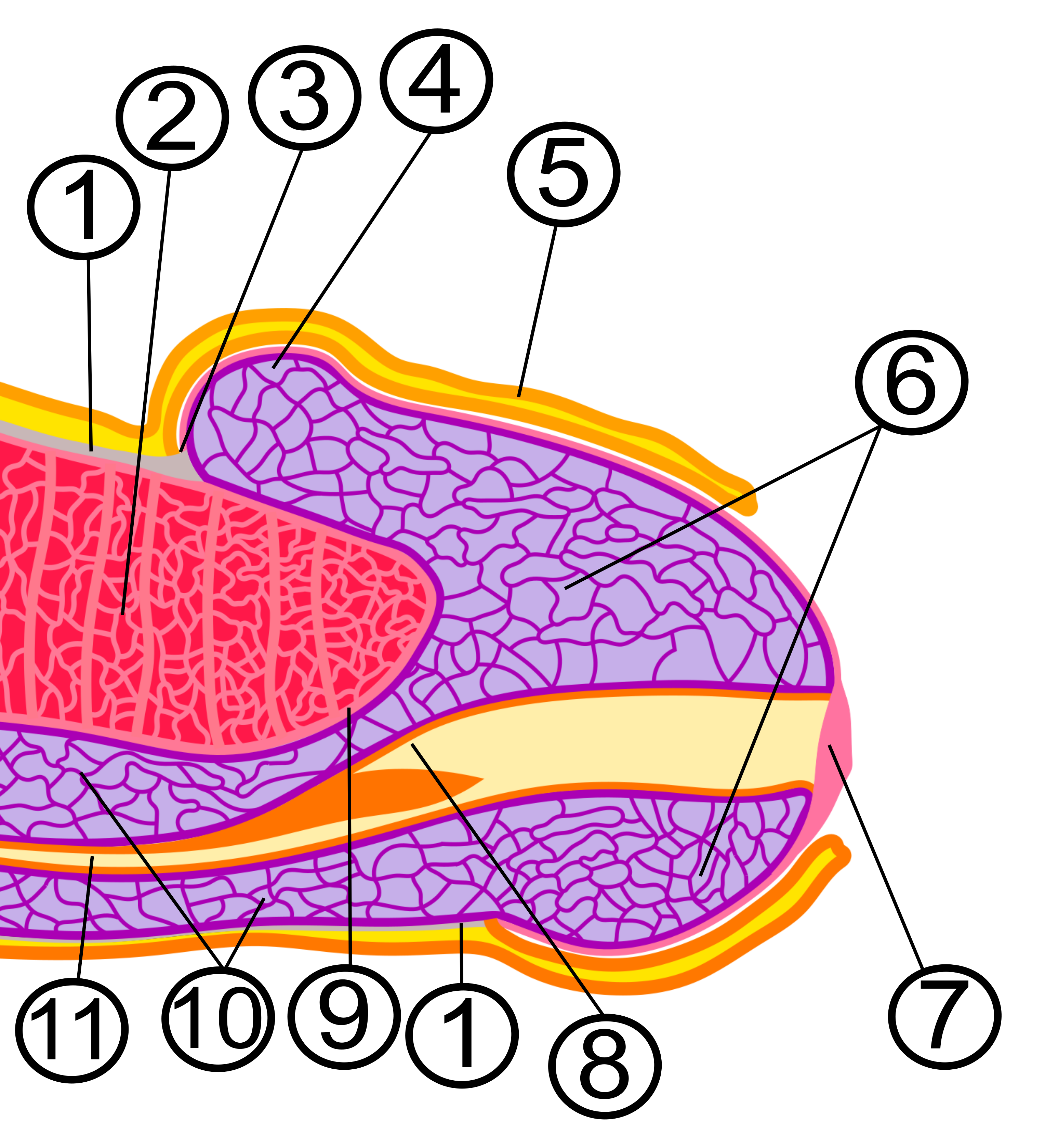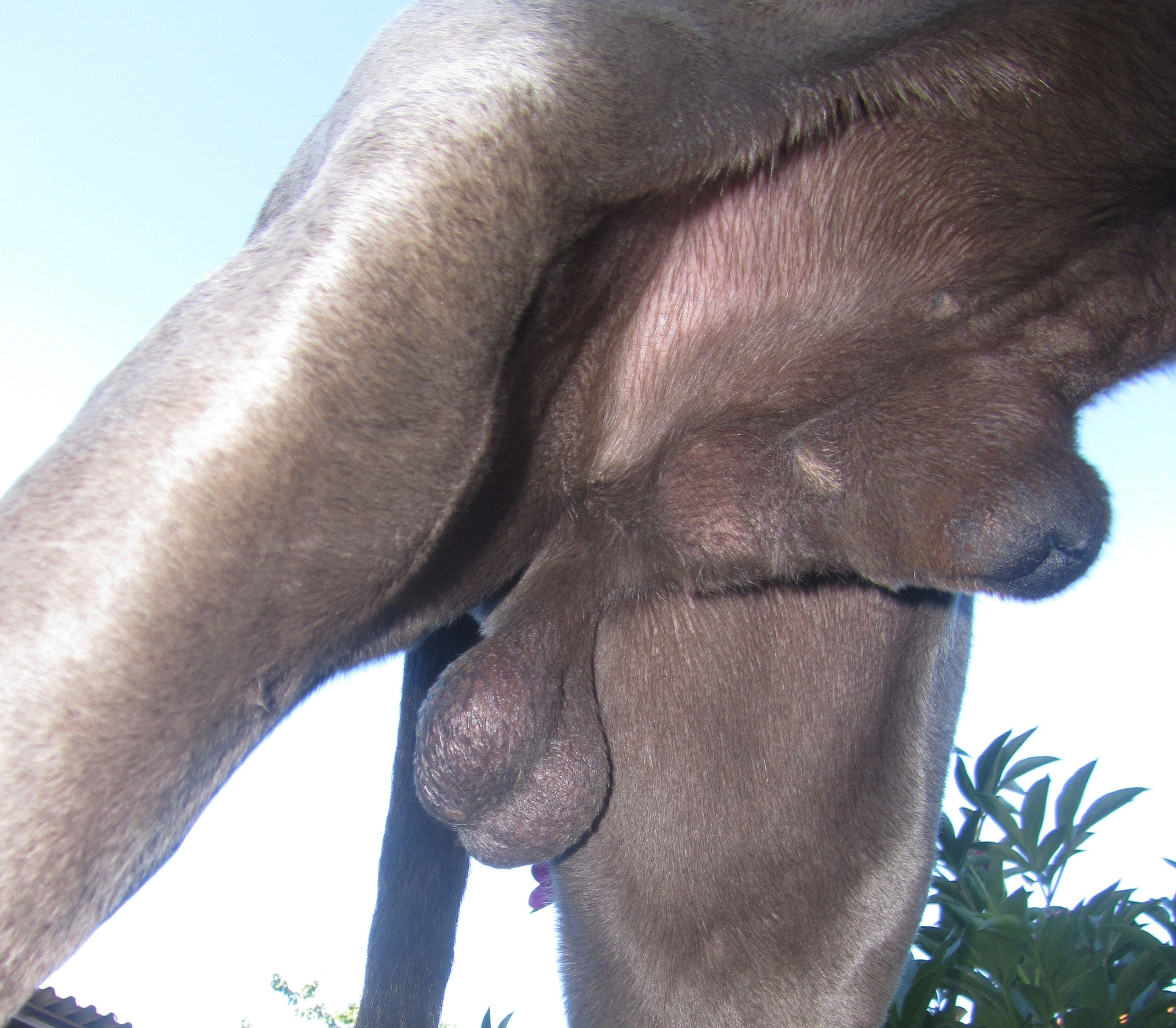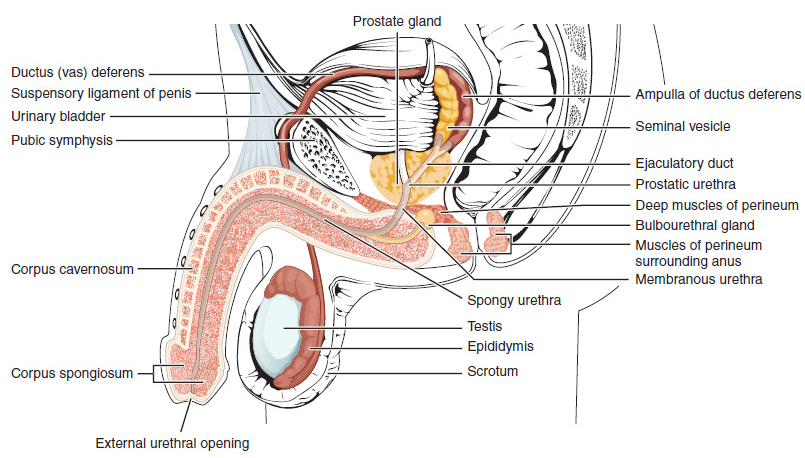|
Foreskin
In male Human body, human anatomy, the foreskin, also known as the prepuce (), is the double-layered fold of Human skin, skin, Mucous membrane, mucosal and Muscle tissue, muscular tissue at the distal end of the human penis that covers the glans penis, glans and the urinary meatus. The foreskin is attached to the glans by an elastic band of tissue, known as the Frenulum of prepuce of penis, frenulum. The outer skin of the foreskin meets with the inner preputial mucosa at the area of the mucocutaneous junction. The foreskin is mobile, fairly stretchable and sustains the glans in a moist environment. Except for humans, a similar structure known as a penile sheath appears in the male sexual organs of all primates and the vast majority of mammals. In humans, foreskin length varies widely and coverage of the glans in a flaccid and erect state can also vary. The foreskin is fused to the glans at birth and is generally not wiktionary:retractable, retractable in infancy and early childho ... [...More Info...] [...Related Items...] OR: [Wikipedia] [Google] [Baidu] [Amazon] |
Glans Penis
In male human anatomy, the glans penis or penile glans, commonly referred to as the glans, (; from Latin ''glans'' meaning "acorn") is the bulbous structure at the Anatomical terms of location#Proximal and distal, distal end of the human penis that is the human male's most sensitive erogenous zone and primary anatomical source of Human sexuality, sexual pleasure. The glans penis is present in the male reproductive system, reproductive organs of humans and most other mammals where it may appear smooth, spiny, elongated or divided. It is externally lined with Mucosa, mucosal tissue, which creates a smooth texture and glossy appearance. In humans, the glans is located over the distal ends of the Corpus cavernosum penis, corpora cavernosa and is a continuation of the Corpus spongiosum (penis), corpus spongiosum of the penis. At the summit appears the urinary meatus and at the base forms the Corona of glans penis, corona glandis. An elastic band of tissue, known as the Penile frenulum ... [...More Info...] [...Related Items...] OR: [Wikipedia] [Google] [Baidu] [Amazon] |
Preputial Mucosa
The preputial mucosa of the Human penis, penis is the epithelium of the inside of the prepuce, or foreskin. To differentiate it from the cutaneous Human skin, skin of the outside of the Foreskin, prepuce, it is sometimes referred to as the inner mucosa. It starts at the ridged band of the Foreskin, prepuce and continues to the coronal sulcus (groove behind the glans penis), where it meets the epithelium of the glans and penile shaft. The preputial mucosa is devoid of hair, as is the cutaneous surface. Weiss ''et al''. (1993) report the preputial mucosa contains fewer Langerhans cells than most mucosal epithelia. These cells secrete cytokines (a non-antibody protein that generates an immune response on contact with specific antigens), and are an essential part of the immune system. Fleiss ''et al''. (1998) point out that Weiss ''et al''. (1993) studied foreskins of neonates and their findings may not be applicable to adults. De Witte ''et al''. (2007) report that Langerhans cells pr ... [...More Info...] [...Related Items...] OR: [Wikipedia] [Google] [Baidu] [Amazon] |
Phimosis
Phimosis (from Greek language, Greek φίμωσις ''phimōsis'' 'muzzling') is a condition in which the foreskin of the Human penis, penis cannot stretch to allow it to be pulled back past the Glans penis, glans. A balloon-like swelling under the foreskin may occur with urination. In teenagers and adults, it may result in pain during an erection, but is otherwise not painful. Those affected are at greater risk of inflammation of the glans, known as balanitis, and other complications. In infancy, phimosis is considered physiological (normal). At birth, the foreskin is naturally adhered to the glans, and cannot be retracted. As the child ages, in most cases, the foreskin will naturally detach. In young boys, it is normal not to be able to pull back the foreskin at all. Over 90% of cases resolve by the age of seven, although full retraction is still prevented by balanopreputial adhesions in over half at this age. Occasionally, phimosis may be caused by an underlying condition s ... [...More Info...] [...Related Items...] OR: [Wikipedia] [Google] [Baidu] [Amazon] |
Sexual Organ
A sex organ, also known as a reproductive organ, is a part of an organism that is involved in sexual reproduction. Sex organs constitute the primary sex characteristics of an organism. Sex organs are responsible for producing and transporting gametes, as well as facilitating fertilization and supporting the development and birth of offspring. Sex organs are found in many species of animals and plants, with their features varying depending on the species. Sex organs are typically differentiated into male and female types. In animals (including humans), the male sex organs include the testicles, epididymides, and penis; the female sex organs include the clitoris, ovaries, oviducts, and vagina. The testicle in the male and the ovary in the female are called the ''primary sex organs''. All other sex-related organs are known as ''secondary sex organs''. The outer parts are known as the genitals or external genitalia, visible at birth in both sexes, while the inner parts are refe ... [...More Info...] [...Related Items...] OR: [Wikipedia] [Google] [Baidu] [Amazon] |
Preputial Mucosa
The preputial mucosa of the Human penis, penis is the epithelium of the inside of the prepuce, or foreskin. To differentiate it from the cutaneous Human skin, skin of the outside of the Foreskin, prepuce, it is sometimes referred to as the inner mucosa. It starts at the ridged band of the Foreskin, prepuce and continues to the coronal sulcus (groove behind the glans penis), where it meets the epithelium of the glans and penile shaft. The preputial mucosa is devoid of hair, as is the cutaneous surface. Weiss ''et al''. (1993) report the preputial mucosa contains fewer Langerhans cells than most mucosal epithelia. These cells secrete cytokines (a non-antibody protein that generates an immune response on contact with specific antigens), and are an essential part of the immune system. Fleiss ''et al''. (1998) point out that Weiss ''et al''. (1993) studied foreskins of neonates and their findings may not be applicable to adults. De Witte ''et al''. (2007) report that Langerhans cells pr ... [...More Info...] [...Related Items...] OR: [Wikipedia] [Google] [Baidu] [Amazon] |
Penile Sheath
Almost all mammal penises have foreskins or prepuces. In non-human mammals, the prepuce is sometimes called the penile sheath or preputial sheath. In koalas, the foreskin contains naturally occurring bacteria that play an important role in fertilization. In some bat species, the prepuce contains an erectile tissue structure called the ''accessory corpus cavernosum''. During musth, a male elephant may urinate with the penis still in the sheath, which causes the urine to spray on the hind legs.Sukumar, pp. 100–08. Male dogs and wild dogs have a large and conspicuous penile sheath. In stallions, the retractor penis muscle contracts to retract the stallion's penis into the sheath and relaxes to allow the penis to extend from the sheath. The penile sheath of a male axis deer is elongated and urine-stained. When rubbing trees with their horns, these stags sometimes move the penis back and forth rapidly inside its sheath. Male bison and fallow deer Fallow deer is the co ... [...More Info...] [...Related Items...] OR: [Wikipedia] [Google] [Baidu] [Amazon] |
Human Penis
In Human body, human anatomy, the penis (; : penises or penes; from the Latin ''pēnis'', initially 'tail') is an external sex organ (intromittent organ) through which males urination, urinate and ejaculation, ejaculate, as Penis, on other animals. Together with the testes and surrounding structures, the penis functions as part of the male reproductive system. The main parts of the penis are the Root of penis, root, Body of penis, body, the epithelium of the penis, including the shaft skin, and the foreskin covering the glans penis, glans. The body of the penis is made up of three columns of tissue (biology), tissue: two Corpus cavernosum penis, corpora cavernosa on the dorsal side and corpus spongiosum penis, corpus spongiosum between them on the ventral side. The Urethra#Male, urethra passes through the prostate gland, where it is joined by the ejaculatory ducts, and then through the penis. The urethra goes across the corpus spongiosum and ends at the tip of the glans as the o ... [...More Info...] [...Related Items...] OR: [Wikipedia] [Google] [Baidu] [Amazon] |
Dorsal Veins Of The Penis
In human male anatomy, the dorsal veins of the penis are blood vessels that drain the shaft ( corpora cavernosa, corpus spongiosum), the skin and the glans of the human penis. They are typically located in the midline on the dorsal aspect of the penis and they comprise the superficial dorsal vein of the penis, that lies in the subcutaneous tissue of the shaft, and the deep dorsal vein of the penis, that lies beneath the deep fascia. Superficial dorsal vein The ''superficial dorsal vein of the penis'' belongs to the superficial drainage system. It is located within the superficial dartos fascia, a continuation of the Colles' fascia, on the dorsal surface of the penis and, in contrast to the deep dorsal vein, it lies outside the deeper Buck's fascia. It is formed by smaller superficial veins that merge on the dorsolateral aspect of the penis. It drains the prepuce and the skin of the shaft, and, running backward in the subcutaneous tissue, inclines to the right or left, and op ... [...More Info...] [...Related Items...] OR: [Wikipedia] [Google] [Baidu] [Amazon] |
Mammal
A mammal () is a vertebrate animal of the Class (biology), class Mammalia (). Mammals are characterised by the presence of milk-producing mammary glands for feeding their young, a broad neocortex region of the brain, fur or hair, and three Evolution of mammalian auditory ossicles, middle ear bones. These characteristics distinguish them from reptiles and birds, from which their ancestors Genetic divergence, diverged in the Carboniferous Period over 300 million years ago. Around 6,640 Neontology#Extant taxon, extant species of mammals have been described and divided into 27 Order (biology), orders. The study of mammals is called mammalogy. The largest orders of mammals, by number of species, are the rodents, bats, and eulipotyphlans (including hedgehogs, Mole (animal), moles and shrews). The next three are the primates (including humans, monkeys and lemurs), the Artiodactyl, even-toed ungulates (including pigs, camels, and whales), and the Carnivora (including Felidae, ... [...More Info...] [...Related Items...] OR: [Wikipedia] [Google] [Baidu] [Amazon] |
Stratified Squamous Epithelium
A stratified squamous epithelium consists of squamous (flattened) epithelial cells arranged in layers upon a basal membrane. Only one layer is in contact with the basement membrane; the other layers adhere to one another to maintain structural integrity. Although this epithelium is referred to as squamous, many cells within the layers may not be flattened; this is due to the convention of naming epithelia according to the cell type at the surface. In the deeper layers, the cells may be columnar or cuboidal. There are no intercellular spaces. This type of epithelium is well suited to areas in the body subject to constant abrasion, as the thickest layers can be sequentially sloughed off and replaced before the basement membrane is exposed. It forms the outermost layer of the skin and the inner lining of the mouth, esophagus and vagina. In the epidermis of skin in mammals, reptiles, and birds, the layer of keratin in the outer layer of the stratified squamous epithelial surface is ... [...More Info...] [...Related Items...] OR: [Wikipedia] [Google] [Baidu] [Amazon] |
Keratin
Keratin () is one of a family of structural fibrous proteins also known as ''scleroproteins''. It is the key structural material making up Scale (anatomy), scales, hair, Nail (anatomy), nails, feathers, horn (anatomy), horns, claws, Hoof, hooves, and the outer layer of skin in vertebrates. Keratin also protects epithelial cells from damage or stress. Keratin is extremely insoluble in water and organic solvents. Keratin monomers assemble into bundles to form intermediate filaments, which are tough and form strong mineralization (biology), unmineralized epidermal appendages found in reptiles, birds, amphibians, and mammals. Excessive keratinization participate in fortification of certain tissues such as in horns of cattle and rhinos, and armadillos' osteoderm. The only other biology, biological matter known to approximate the toughness of keratinized tissue is chitin. Keratin comes in two types: the primitive, softer forms found in all vertebrates and the harder, derived forms fou ... [...More Info...] [...Related Items...] OR: [Wikipedia] [Google] [Baidu] [Amazon] |
Body Of Penis
The body or shaft of the penis is the free portion of the human penis that is located outside of the pelvic cavity. It is the continuation of the internal root, which is embedded in the pelvis and extends to the glans. It is made up of the two corpora cavernosa and the corpus spongiosum on the underside. The corpora cavernosa are intimately bound to one another with a dorsally fenestrated septum, which becomes a complete one before the penile crura. The body of the penis is homologous to the female clitoral body. Structure The body of the penis is suspended from the pubic symphysis. It has two surfaces; the ''dorsal'' and the ventral or ''urethral''. The penile raphe runs on its ventral surface. The body is surrounded by a bi-layered model of tunica albuginea in which a distal ligament buttresses the glans penis and plays an integral role to the penile fibroskeleton, and the structure is called "os analog", a term coined by Geng Long Hsu in the Encyclopedia of Reproduc ... [...More Info...] [...Related Items...] OR: [Wikipedia] [Google] [Baidu] [Amazon] |






